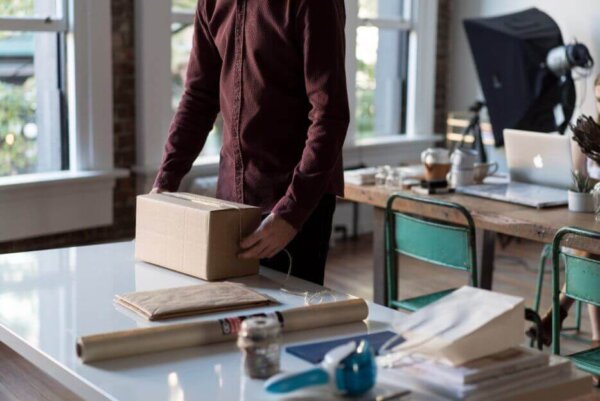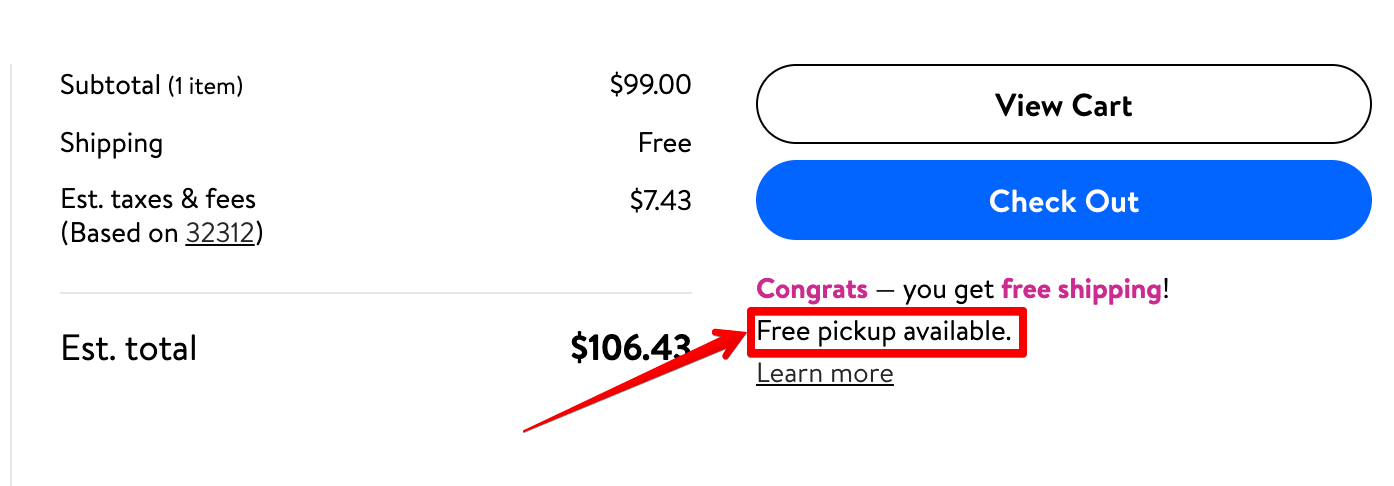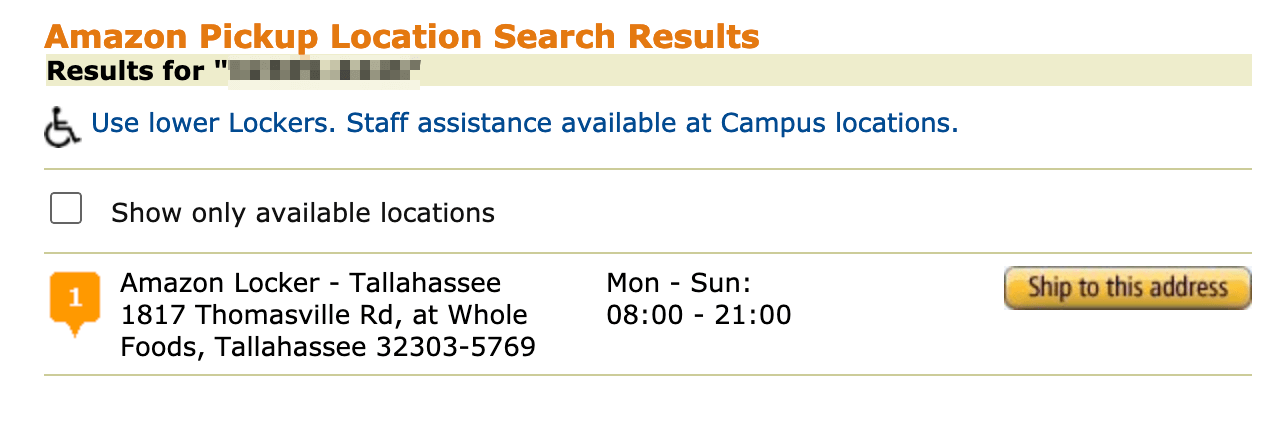
How to Leverage Ship-to-Store for Better Experiences (and Conversions)
With the rising threat of package theft in recent years, ship-to-store delivery options have become a necessary move for ecommerce retailers.
They’re called “Porch Pirates.” However, instead of plundering ships upon the high seas, they plunder porches with unattended packages sitting on them. Or put more simply, they steal packages that have been delivered to houses but not yet taken inside.
And it’s becoming a big problem. Approximately 30 percent of Americans say they’ve been hit by porch pirates at least once, according to a study done by Xfinity Home.
Cathy Robertson, a shipping and delivery expert with Logistics Trends & Insights in Atlanta, says:
It’s just common sense that along with all the tremendous upsides to ordering online, the downside is things can be stolen… You’ve got something worth 200 bucks being delivered to your home? You better be sitting on your front steps when it arrives.
So what’s the solution? How can the porch pirates be thwarted?
In response, many companies are fighting back by shipping items directly to stores and allowing the consumer to pick them up.
In this article, we’re going to cover:
- How exactly the ship-to-store option works
- Why many stores are using it
- How the rise of “porch pirates” presents a unique opportunity for you
- Why you should consider implementing a ship-to-store option
What Exactly Is the Ship-to-Store Option?
It’s not particularly complicated. If you have a brick-and-mortar store(s), you simply offer consumers the option of picking up their order at your store instead of receiving it at their home.

Numerous “click-and-mortar” retailers have implemented a store pickup option, including:
- Apple
- Walmart
- Macy’s
- Nordstrom
- Target
- Kohl’s
- Dozens of others
Amazon is going to unique lengths to offer a ship-to-store option. In many cities, they have “lockers”, which are a sort of storage unit where customers can pick up their packages.

Taking things a step further, Amazon recently announced what they’re calling “Key In Car” delivery. Using an app, customers can give couriers access to their cars, and the couriers will then place the packages in the cars, significantly reducing the chances of package theft
Writing in The Verge, Andrew Jenkins notes:
After purchasing an item and selecting in-car delivery, Amazon sends a series of notifications to let you know that the package is on its way. At any point, you can choose to change delivery locations or “block access” to the car in the Key app, if for some reason you need to run a quick errand or your car won’t be immediately accessible to the delivery person. Amazon will then default to your backup delivery location if access to the vehicle is blocked.
Clearly, Amazon recognizes the problem of packages being stolen and is going to great lengths to prevent it.
Perhaps it’s time you also considered implementing a customer-focused delivery option with your ecommerce business.
Why Offer Ship-to-Store Shipping?
You may be thinking that implementing ship-to-store shipping sounds complicated. Are there really that many advantages to it? It turns out there are.
First and foremost, it prevents package theft. This in and of itself is a big win, both for you and for your customers. The simple truth is that the threat of package theft is starting to influence the way customers shop online.
In Los Angeles alone, reported package thefts have increased by a staggering 581 percent since 2010. And with most thefts going unreported to the police, it’s a safe bet to say that the number is quite a bit higher.
In a recent study by Shipp, 53 percent of people have actively changed their plans so that they can be home when a package is delivered, and 41 percent of people have avoided purchasing certain items online due to theft concerns. The primary type of item that people have avoided buying? Not surprisingly, it’s electronics.
In the same study by Shipp, 61 percent of people said they felt that online retailers weren’t doing enough to prevent package theft, and a whopping 71 percent said that they would be open to having their packages delivered to an alternative location, such as a locker.
The moral of the story? People want to be sure that their packages won’t be stolen, and if you can offer an alternative delivery method, it’s likely to increase your overall conversion rate and customer satisfaction
But ship-to-store shipping has more advantages than simply offering peace of mind to consumers. It can also increase your in-store conversion rate.
It turns out that when customers come to a store to pick up their package, they tend to make other purchases while they’re there. Some of these purchases are impulse buys, while others are on items already needed.
Writing in Forbes, Bryan Pearson says:
These super-short trips [to pick up packages] can result in higher-proportioned revenue because shoppers who place pickup orders, encouraged by the prospect of a quick in-and-out visit, remain prone to split-second purchase decisions.
“As good as delivery is getting—one-day delivery, sometimes one-hour delivery—that still can’t compete with the one-second immediacy of being in store and picking up that avocado … because I thought about it in that moment,” explained Todd Dipaola, chief executive and founder of InMarket.
The statistics back this up. Every year, customers spend approximately $5,400 on impulse purchases, according to a survey by Slickdeals.net. Eighty-five percent of respondents to the survey said that their impulse purchases were in response to some sort of discount or deal. On top of this, 8 out of 10 impulse purchases are made in brick-and-mortar stores.
This presents a unique opportunity for you as a retailer. By offering in-store pickup, you significantly increase the chances that a customer will make additional purchases once they’re in the store. If you can combine in-store pickup with specific discounts, you may be able to significantly increase your conversion rate on those discounted items.
Riding the Ship-to-Store Bandwagon
48 percent of retailers in the United States are already offering their customers the ability to ship packages directly to the store including 62 percent of the top 50 ecommerce retailers.
Best Buy, Walmart, Target, and other retailers are using the ship-to-store option as a way to compete with Amazon.
And with package theft likely to continue rising, we should expect more retailers to offer their customers a ship-to-store option.
In addition, if you can get customers into your store, there’s a much higher likelihood of them making additional purchases, which will increase your overall conversion rate and revenue.
Yes, implementing a ship-to-store option complicates the shipping process slightly for you. But it’s quickly becoming a non-negotiable move for ecommerce retailers.
So, will you hop on the ship-to-store bandwagon, or will you continue allowing your customers to fall prey to the “porch pirates”?
Enjoying this article?
Subscribe to our newsletter, Good Question, to get insights like this sent straight to your inbox every week.

About the Author
David Hoos
David Hoos is the former Director of Marketing at The Good and a trusted advisor to marketing experts.